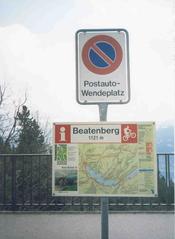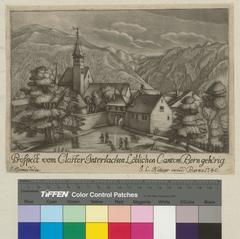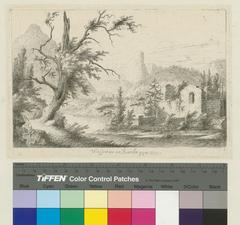
Former Monastery Buildings in Interlaken: Visiting Hours, Tickets, and Historical Sites Guide
Date: 04/07/2025
Introduction: Exploring Interlaken’s Former Monastery Buildings
Nestled between the sparkling waters of Lake Thun and Lake Brienz, the former monastery buildings in Interlaken, Switzerland, offer a window into nearly nine centuries of history and culture (myinterlakenpass.com; Wikipedia). Founded in the early 12th century as an Augustinian monastery, the site evolved from a spiritual and economic center into a vibrant civic hub, reflecting the dynamic narrative of the Bernese Oberland. Today, this well-preserved complex—comprising the monastery church, cloisters, and the prominent “new castle” administrative wing—stands as both a historical monument and an active part of Interlaken’s community life (blosslynspage.wordpress.com).
Visitors can freely explore the grounds and church throughout the year, while guided tours and special exhibitions offer deeper insights into the site’s multifaceted history. The central location of the monastery makes it an excellent base for discovering nearby attractions, such as Höhematte Park and Harder Kulm, enhancing any cultural itinerary in this picturesque Swiss town (interlaken.ch; explorecity.life).
This comprehensive guide details everything you need to know for a rewarding visit: from historical context and architectural highlights to visiting hours, ticketing, accessibility, and travel tips.
Table of Contents
- Origins and Foundation of the Monastery
- Architectural Evolution and Monastic Life
- The Monastery’s Role in Regional Development
- Secularization and Transformation
- Preservation and Historical Significance
- Visiting Hours, Tickets, and Tour Information
- Accessibility and Travel Tips
- Visuals, Media, and Online Resources
- FAQs
- Cultural and Community Significance
- Plan Your Visit Today
- Discover Interlaken Castle and Schlosskirche
- Interlaken Monastery: Visiting Hours, Tickets, History, and Nearby Attractions
- Practical Visitor Information
- Highlights and Notable Features
- Tips for a Memorable Visit
- Conclusion and Further Reading
Origins and Foundation of the Monastery
The roots of Interlaken trace back to the establishment of its monastery between 1130 and 1133 CE. This Augustinian house, strategically situated “between lakes,” became a nucleus for spiritual life and regional development (myinterlakenpass.com; explorecity.life). The monastery quickly grew in importance, attracting clergy, lay brothers, and even a significant female religious community, all of whom contributed to the area’s spiritual, educational, and economic growth.
Architectural Evolution and Monastic Life
Originally built in the Romanesque style, with thick stone walls and rounded arches, the complex later incorporated Gothic features and underwent neo-Gothic renovations in the early 20th century. Key components included the monastery church, cloisters, and agricultural buildings designed for self-sufficiency.
Monastic life was defined by religious discipline, agricultural work, and hospitality toward travelers. The scriptorium likely played a key role in manuscript production and cultural preservation (myinterlakenpass.com).
The Monastery’s Role in Regional Development
Beyond its religious mission, the monastery became a dominant landholder and economic engine for the region, managing farms, collecting tithes, and administering justice. Its strategic location fostered trade and attracted settlers, transforming Interlaken into a bustling market town (explorecity.life).
Secularization and Transformation
The Protestant Reformation in 1528 resulted in secularization, with the monastery’s assets seized by the state and the religious community expelled (myinterlakenpass.com). The buildings were repurposed for administrative and civic functions, such as district headquarters, a hospital, and even a granary and wine cellar in the former choir.
Preservation and Historical Significance
Today, the former monastery buildings are protected as national heritage sites, reflecting their enduring architectural and cultural value (explorecity.life). Restoration efforts ensure ongoing preservation, providing a tangible link to Interlaken’s medieval past.
Visiting Hours, Tickets, and Tour Information
- Hours: Grounds and church are generally open from 9:00 AM to 5:00 PM year-round, with extended hours in summer (June to September). Check for seasonal changes or private events.
- Admission: Free access to grounds and church; guided tours and exhibitions may require tickets.
- Guided Tours: Available daily (typically at 10:00 AM and 2:00 PM). Advance booking is recommended, especially in peak season.
- Tickets: Purchase online via Interlaken Tourism or at the tourist office.
Accessibility and Travel Tips
The site is largely accessible, though some historic areas have uneven surfaces. Accessible restrooms and ramps are available. The monastery is a 10-minute walk from both Interlaken West and Interlaken Ost stations. Limited parking is available; public transport is advised. Combine your visit with local attractions like Kunsthaus Interlaken or Lake Thun cruises.
Visuals, Media, and Online Resources
Visitors can explore virtual tours and galleries with detailed imagery and historical commentary, enhancing both planning and on-site experience.


FAQs
Q: What are the visiting hours?
A: Grounds and church are open from 9:00 AM to 5:00 PM; seasonal variations may apply.
Q: Is there an admission fee?
A: No, general admission is free. Guided tours and special exhibitions may require a ticket.
Q: Are guided tours available?
A: Yes, offered daily. Book ahead for peak times.
Q: Is the site wheelchair accessible?
A: Most areas are accessible, but some sections have uneven terrain or steps.
Q: What nearby attractions should I visit?
A: Kunsthaus Interlaken, Harder Kulm, Höhematte Park, and Lake Thun/Brienz.
Cultural and Community Significance
The former monastery buildings are integral to Interlaken’s cultural scene, hosting concerts, exhibitions, and community gatherings. They are especially prominent during festivals like Unspunnenfest, which highlight Swiss traditions and foster community spirit (explorecity.life).
Plan Your Visit Today
Stay informed with the official Interlaken tourism website or the Audiala app for real-time updates, audio guides, and travel tips. Combine your monastery visit with other cultural and scenic highlights for a truly enriching experience.
Discover Interlaken Castle and Schlosskirche
Located at the heart of Interlaken, the former monastery complex—now known as Interlaken Castle and Schlosskirche—offers an array of historical and architectural highlights.
Why Visit?
Experience a blend of Gothic and Renaissance architecture, tranquil cloister gardens, and panoramic views from the iconic 14th-century steeple.
Hours and Tickets
- Open: 9:00 AM to 6:00 PM year-round; check for holiday changes.
- Admission: Most outdoor areas and the cloister gallery are free. Interior tours require a ticket (CHF 10 adults, CHF 5 students/seniors, free for children under 12).
Guided Tours and Accessibility
- Tours: Daily in multiple languages; book ahead in peak season.
- Accessibility: Ramps and smooth pathways make most areas accessible; contact staff for assistance in historic sections.
Tips
- Photography is permitted (no flash/tripods).
- Check the event calendar for concerts and festivals.
- Combine with a stroll through Höhematte Park or the Japanese Garden.
Interlaken Monastery: Visiting Hours, Tickets, History, and Nearby Attractions
The Monastery’s Role in Interlaken’s Identity
From its founding as an Augustinian convent, the monastery became a major landholder and spiritual center, shaping regional governance and economy (Wikipedia; Victoria-Jungfrau). Its transformation during the Reformation and later adaptive uses highlight its resilience and relevance.
Visitor Information
- Hours: 9:00 AM–5:00 PM daily; check for seasonal changes.
- Admission: Free for grounds; tickets required for tours/events.
- Accessibility: Wheelchair accessible; contact in advance for special assistance.
- Guided Tours: Book online or at the visitor center.
- Photography: Allowed; follow site rules.
Nearby Attractions
- Höhematte Park
- Harder Kulm viewpoint
- Unspunnen Castle ruins
- Lakes Thun and Brienz
Practical Visitor Information
Location & Access
Centrally located, the monastery is easily reached by foot or public transport. Well-marked paths and proximity to the Aare River make it a convenient stop in Interlaken.
Tickets & Tours
Admission to the church is free. Guided tours (in English and German) provide deeper historical context.
Accessibility
Most public areas are accessible, though some historic spaces may present challenges. Contact the site for detailed advice.
Highlights and Notable Features
- Stained Glass Windows: Exceptional artistic detail ranging from biblical scenes to modern motifs (blosslynspage.wordpress.com).
- Historic Spire: Original to the medieval church, a defining feature of the skyline.
- “New Castle” Wing: Baroque architecture, visible from the grounds.
Tips for a Memorable Visit
- Visit early or late for a peaceful experience.
- Pair your visit with a lake cruise or a walk through Höhematte Park.
- Check for local concerts or exhibitions for added cultural value.
Conclusion and Further Reading
The former monastery buildings of Interlaken are a profound testament to the region’s religious, social, and cultural evolution. With free access, rich history, and integration into modern civic life, they are a must-see for any visitor to the Bernese Oberland. Plan your journey using official resources and enhance your experience with digital guides like Audiala.
Reliable Sources & Further Reading
- Interlaken Monastery History – MyInterlakenPass
- Explore Interlaken – Travel Guide
- Wikipedia: Interlaken Monastery
- Victoria-Jungfrau Hotel & Spa – Monastery to Tourist Magnet
- Blosslyn’s Page – Interlaken Monastery
- Official Interlaken Tourism Site





